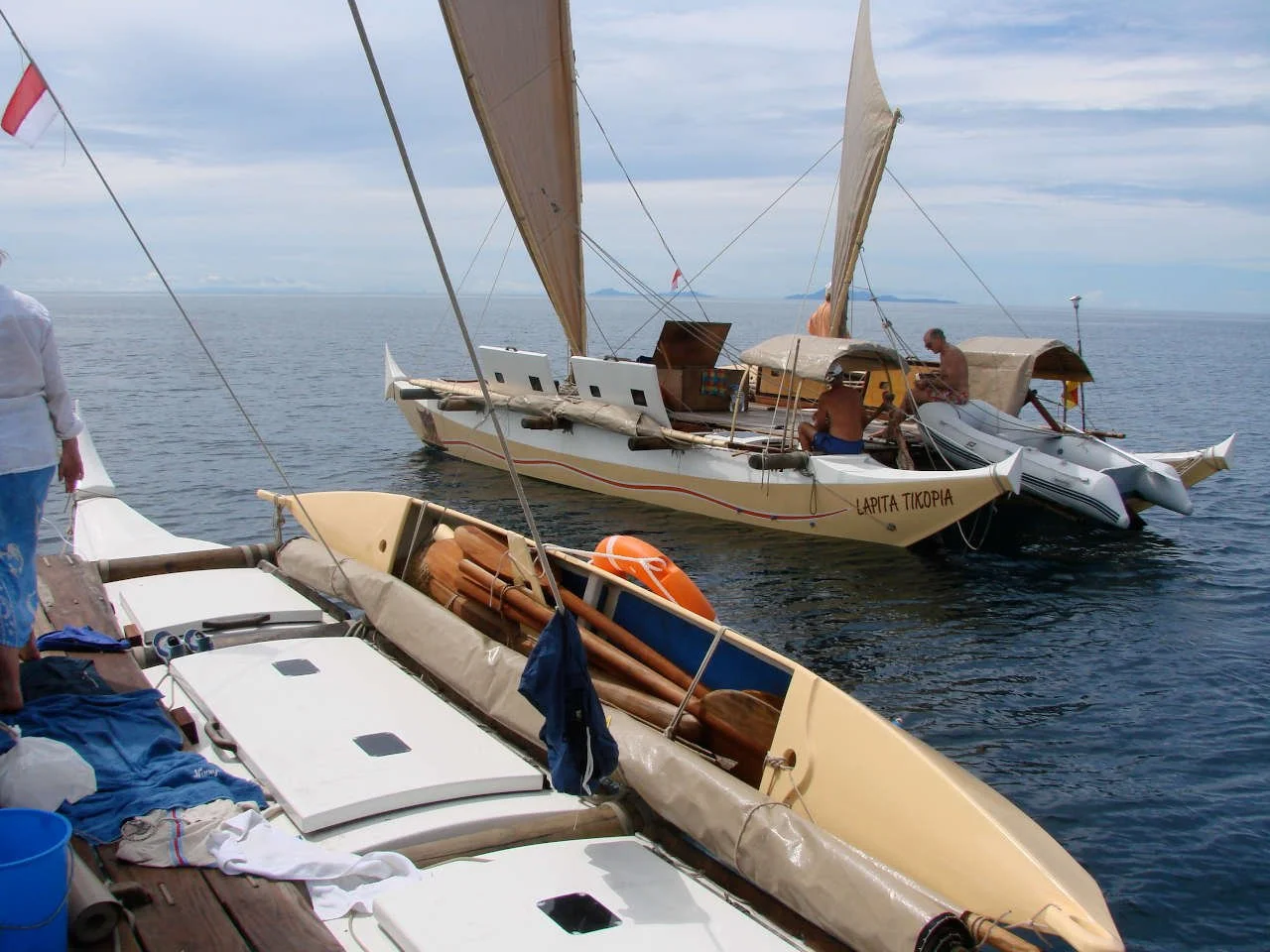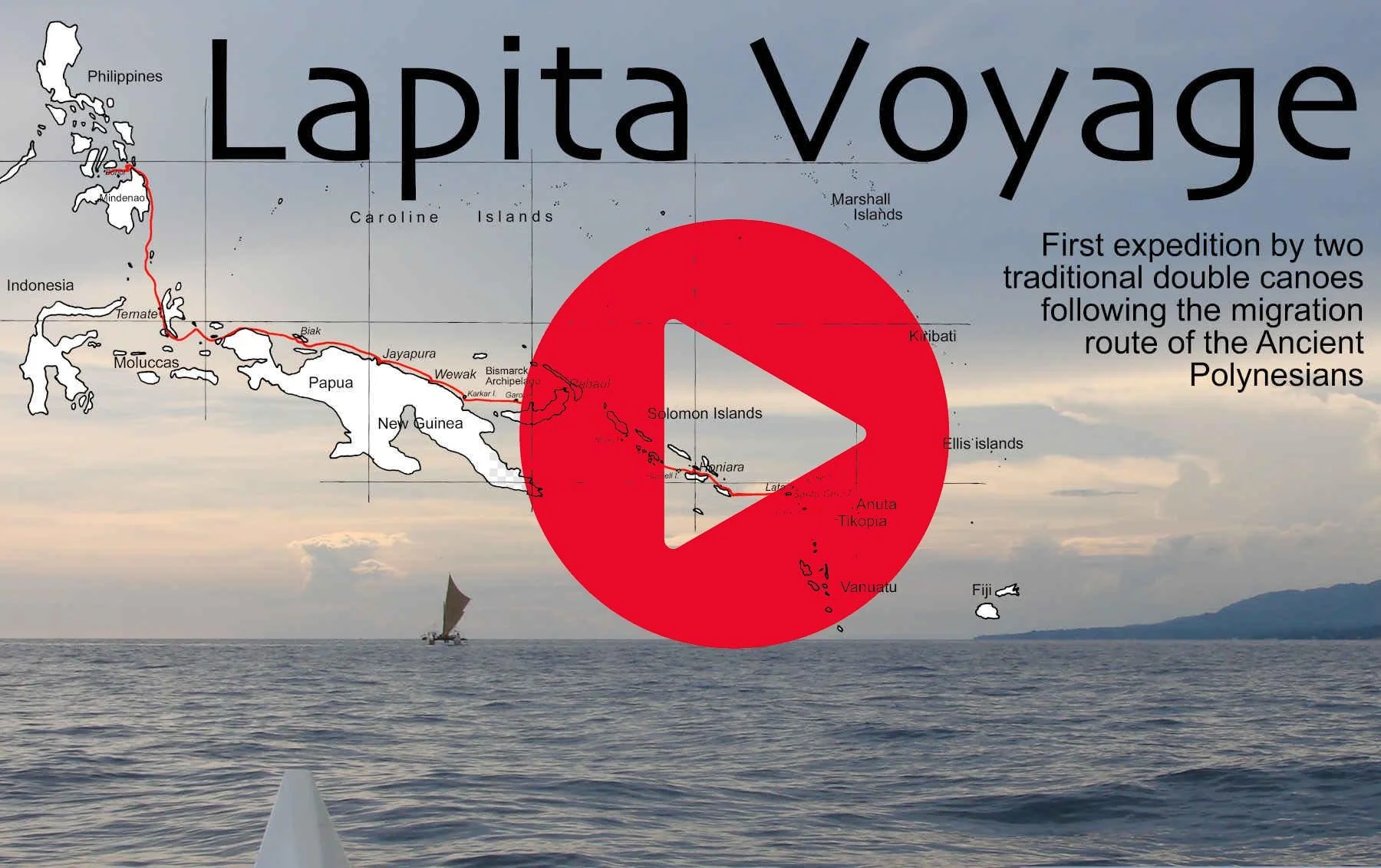The Lapita Voyage
Onboard Lapita Tikopia from www.wharram.com
Here at SWS we have been closet admirers of the work of James Wharram and Hanneke Boon for a few years now. We have published a couple articles that led us to discover the almost cult like following that Wharram designs have engendered. When I first became interested, I thought that this taciturn Englishman was working in a space where eccentricity meets the counterculture…. Well-meaning hippies who were fun to follow, but not to be taken too seriously. But the more I learned the more appreciative I became. The background to his design work has genuine roots in pacific voyaging craft and the philosophy behind his life of adventure is very much in line with the attitudes we hold dear at SWS.
So it was with great anticipation that in researching some material for the next AWBF in 2025, which will have a pacific based theme, I can across this video from 2008 in which an 80-year-old James and Hanneke make an experimental Marine Archaeological expedition following the migrations of the early Polynesians from Southeast Asia into the Pacific.
Lapita Anuta and Lapita Tikopia from www.wharram.com
The ‘Lapita Voyage’ began in the first week of November 2008, when two 38ft double canoes, based on an ancient Polynesian canoe hull-form and built in the Philippines, set out on a 4,000nm voyage along the island chains of the Philippines, Indonesia, New Guinea and the Solomons. Their destination was Anuta and Tikopia, two tiny, remote Polynesian Outliers at the Eastern end of the Santa Cruz Islands, where the boats arrived in mid-March 2009 and were donated to the islanders for their future independent inter island voyaging. The ‘Lapita Voyage’ was the first exploration by ethnic sailing canoe craft of one possible migration route into the Central Pacific from SE Asia. It was the first alternative voyage by double canoe to Thor Heyerdahl’s Kon-tiki raft voyage from South America in 1947, whereby he tried to proof the Polynesians had arrived from South America. The voyage was made entirely under sail, using traditional Polynesian crab claw sails and steering paddles.
It will take an hour of your time to watch it but if you’re at all interested in the deep maritime cultures of our region, then it would be an hour well spent. James and Hanneke present some well-reasoned theories, against a background of adventure and cultural richness. I hope I’m as productive as them when I’m 80!
Interestingly, only a few years ago any search through the cheap end of a “Boat for Sale” page would be littered with half finished, home-made Wharram Catamaran. Nowadays they are rarely on the market. Perhaps an early sign of a move to the values of authenticity and self-sufficiency in our sailing culture?
There is only ONE small one listed for sale in Australia on the big aggregator brokerage sites, but here are a few others in the region. Wharram Tiki 38



